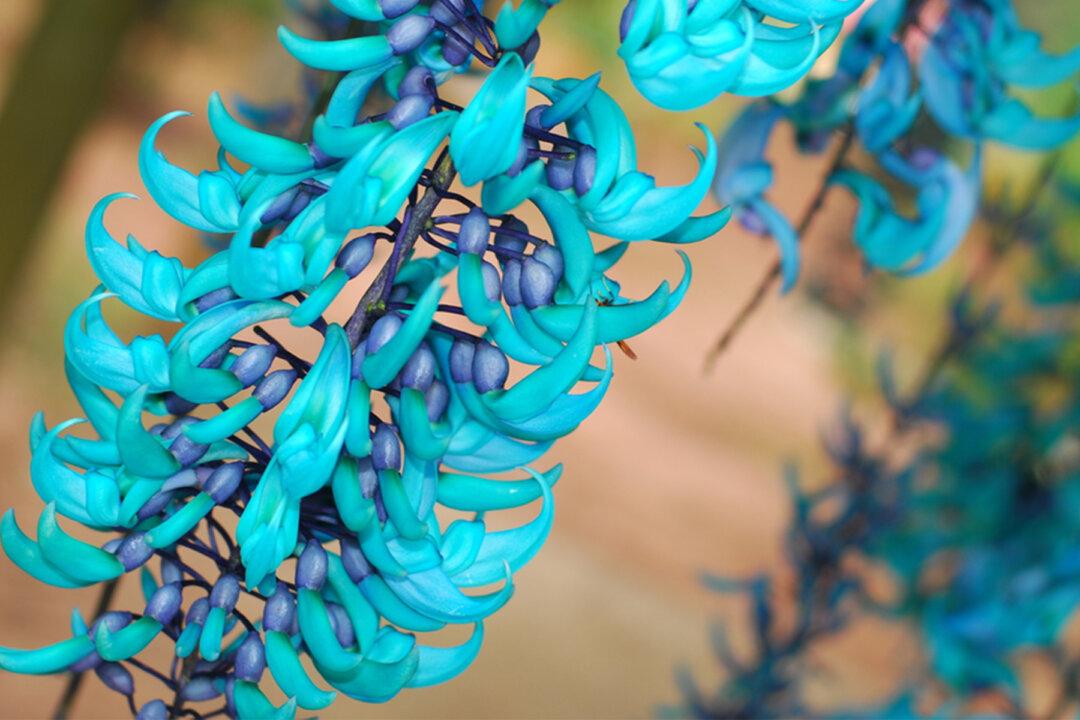It may look like a strange, oversized celestial pendant, but jade vine is Earth’s natural bounty at its finest and it could be grown in your very own garden.
The perennial tropical jade vine—scientific name Strongylodon macrobotrys—is native to the humid rainforests of the Philippines.





